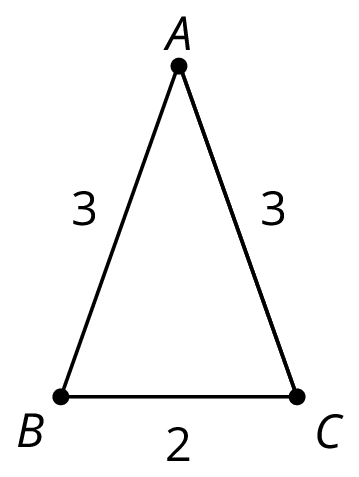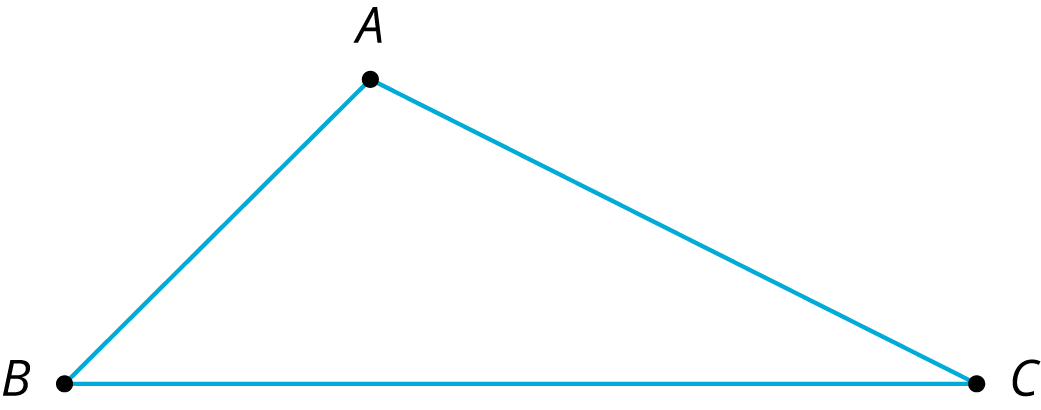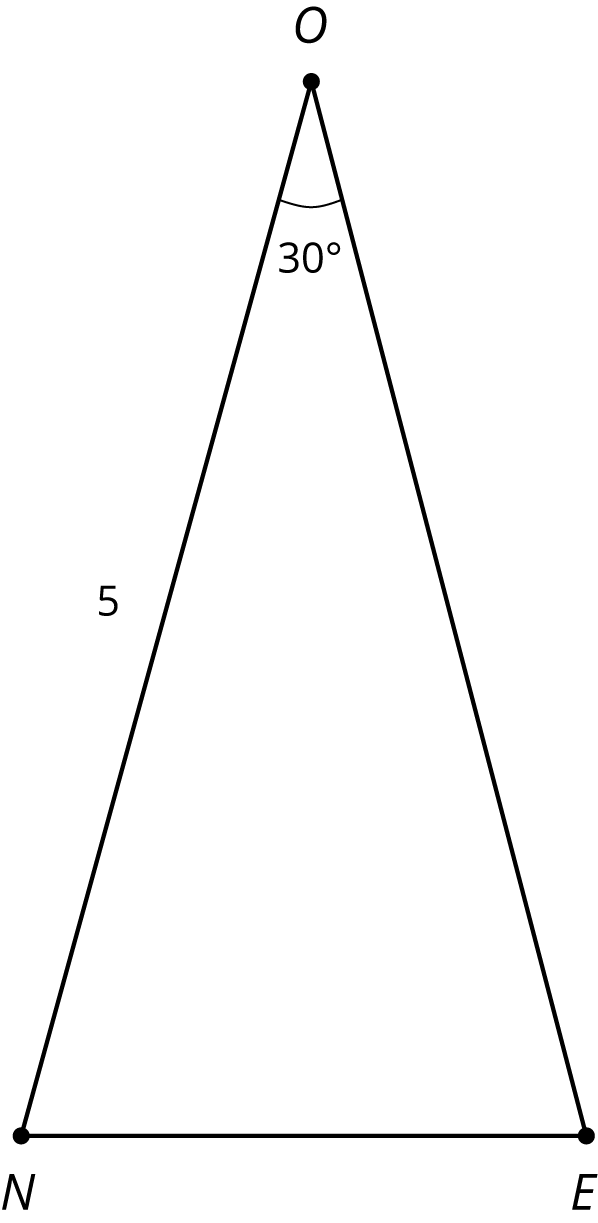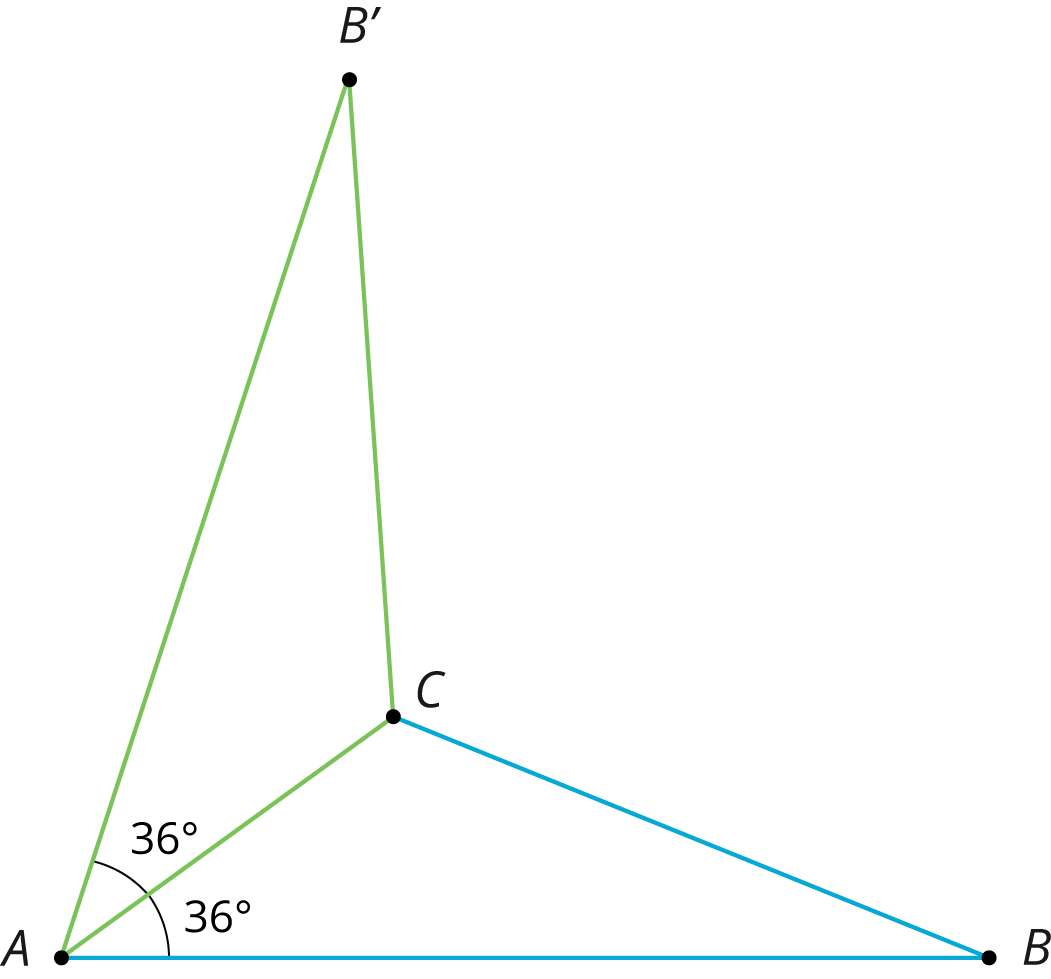10.1: Angles of an Isosceles Triangle
Here is a triangle.

- Reflect triangle ABC over line AB. Label the image of C as C’.
- Rotate triangle ABC’ around A so that C’ matches up with B.
-
What can you say about the measures of angles B and C?
Let’s use reasoning about rigid transformations to find measurements without measuring.
Here is a triangle.

What can you say about the measures of angles B and C?
Here is triangle ABC.

Draw midpoint M of side AC.
Rotate triangle ABC 180 degrees using center M to form triangle CDA. Draw and label this triangle.
In the activity, we made a parallelogram by taking a triangle and its image under a 180-degree rotation around the midpoint of a side. This picture helps you justify a well-known formula for the area of a triangle. What is the formula and how does the figure help justify it?
The picture shows 3 triangles. Triangle 2 and Triangle 3 are images of Triangle 1 under rigid transformations.

Describe a rigid transformation that takes Triangle 1 to Triangle 2. What points in Triangle 2 correspond to points A, B, and C in the original triangle?
Describe a rigid transformation that takes Triangle 1 to Triangle 3. What points in Triangle 3 correspond to points A, B, and C in the original triangle?
Find two pairs of line segments in the diagram that are the same length, and explain how you know they are the same length.
Find two pairs of angles in the diagram that have the same measure, and explain how you know they have the same measure.
Here is isosceles triangle ONE. Its sides ON and OE have equal lengths. Angle O is 30 degrees. The length of ON is 5 units.

Reflect triangle ONE across segment ON. Label the new vertex M.
What is the measure of angle MON?
What is the measure of angle MOE?
Reflect triangle MON across segment OM. Label the point that corresponds to N as T.
How long is \overline{OT}? How do you know?
What is the measure of angle TOE?
If you continue to reflect each new triangle this way to make a pattern, what will the pattern look like?
Earlier, we learned that if we apply a sequence of rigid transformations to a figure, then corresponding sides have equal length and corresponding angles have equal measure. These facts let us figure out things without having to measure them!
For example, here is triangle ABC.

We can reflect triangle ABC across side AC to form a new triangle:

Because points A and C are on the line of reflection, they do not move. So the image of triangle ABC is AB'C. We also know that:
When we construct figures using copies of a figure made with rigid transformations, we know that the measures of the images of segments and angles will be equal to the measures of the original segments and angles.